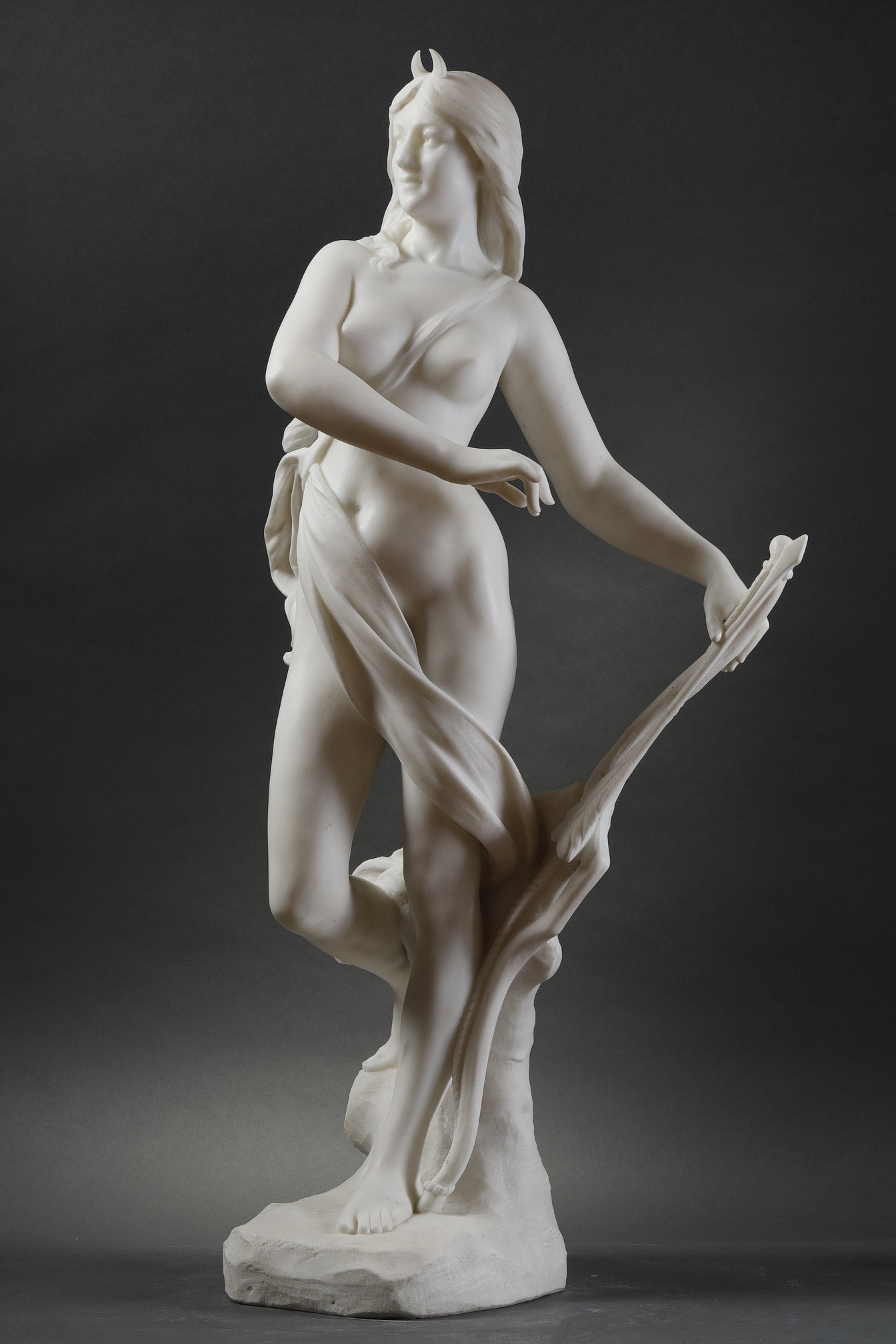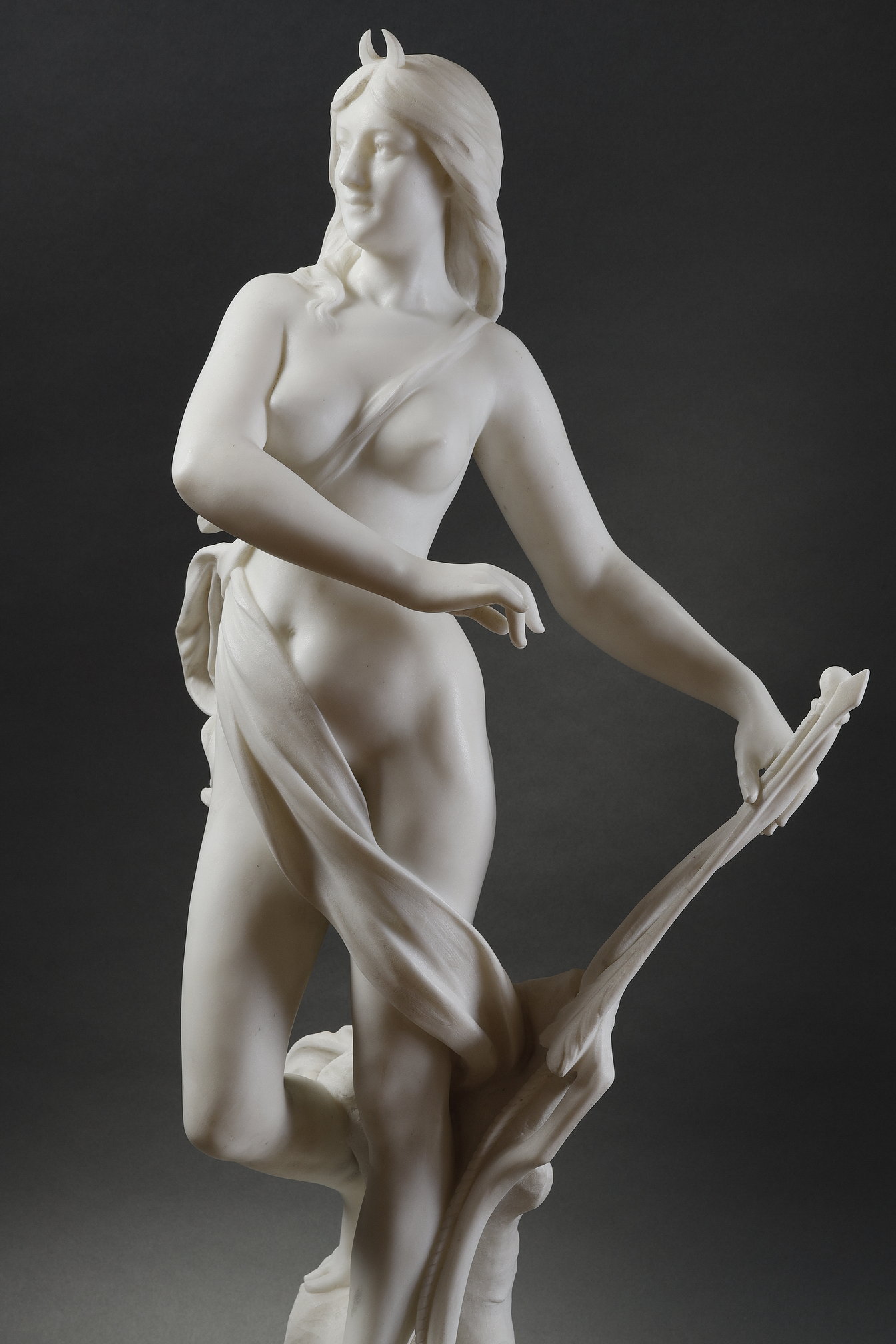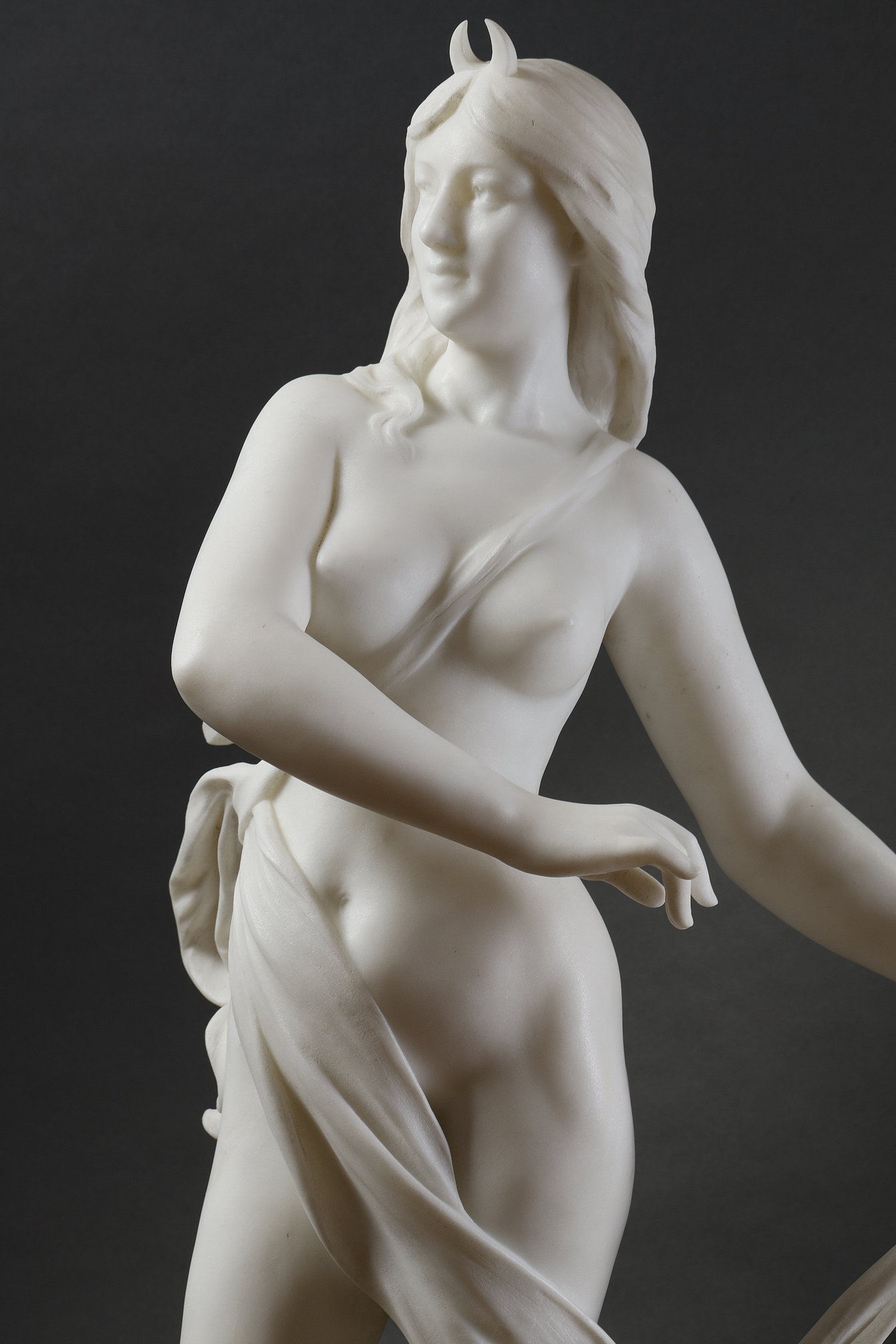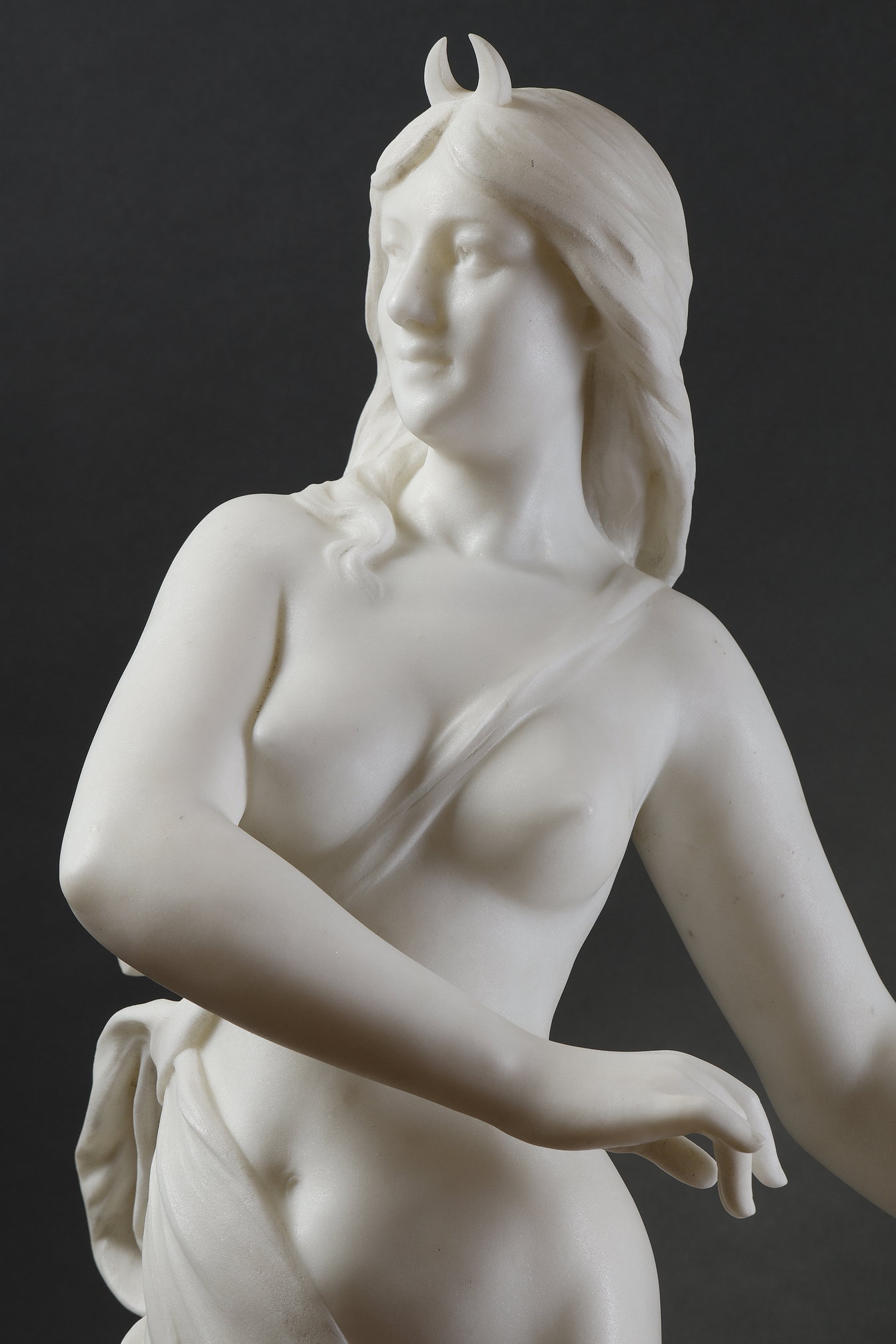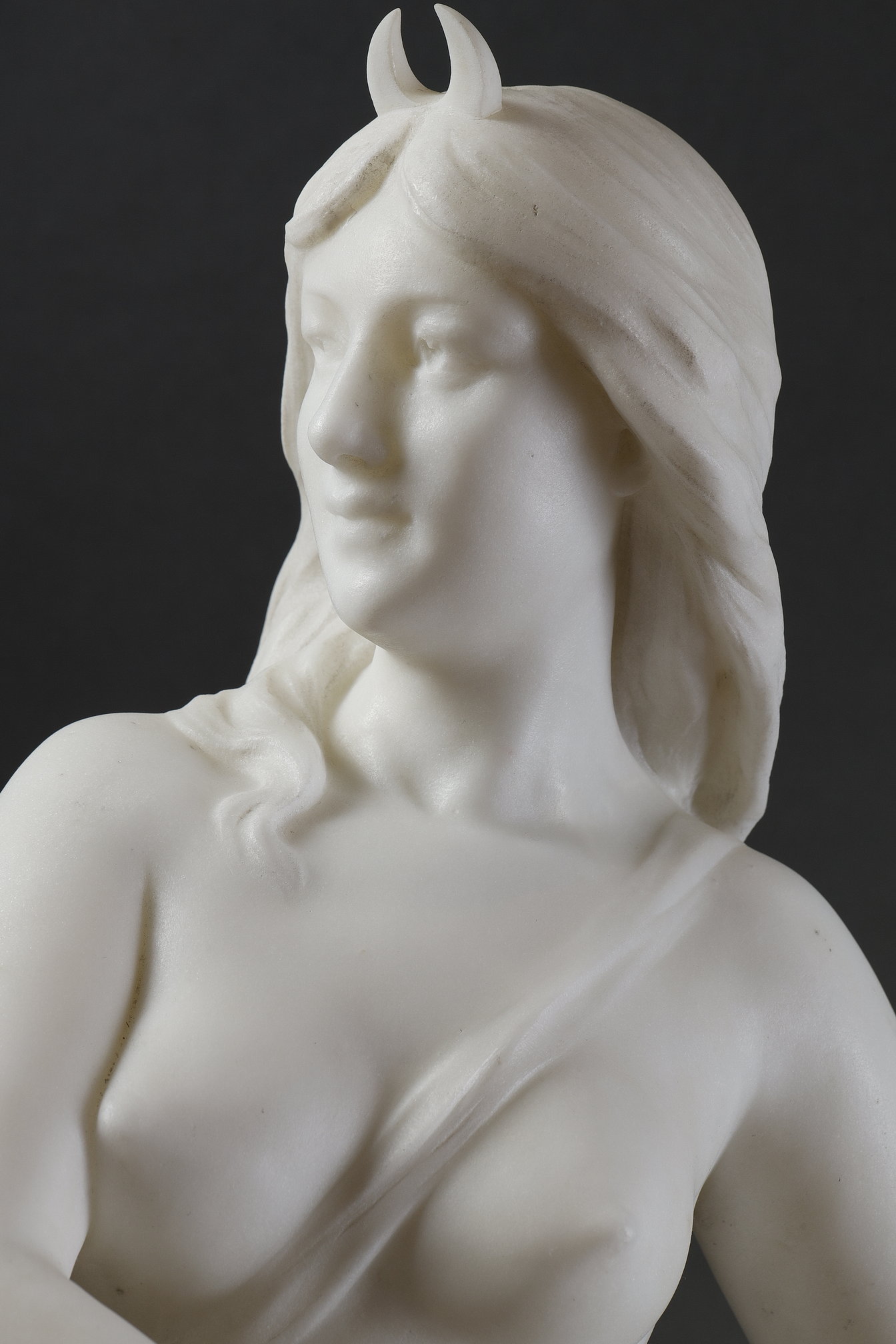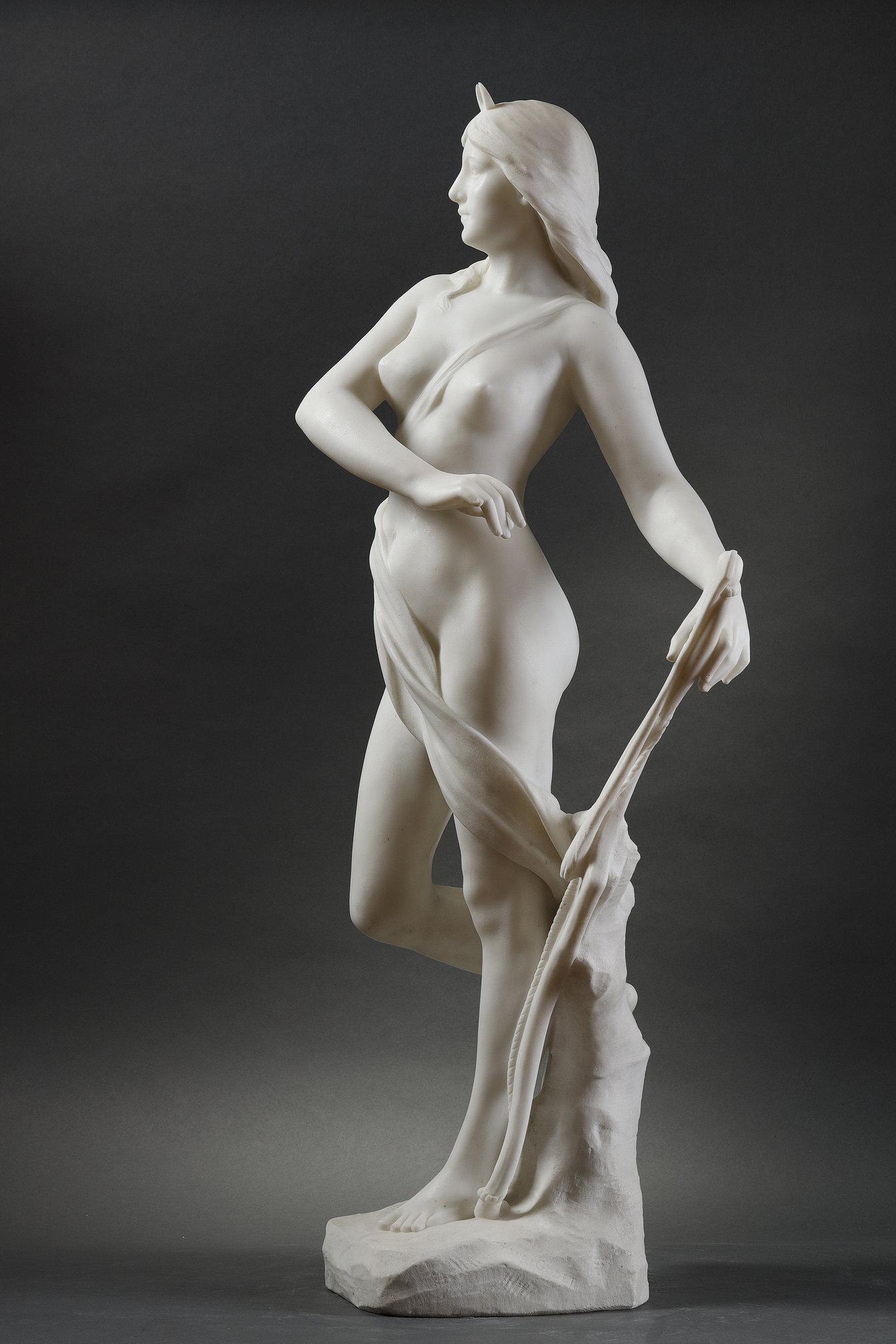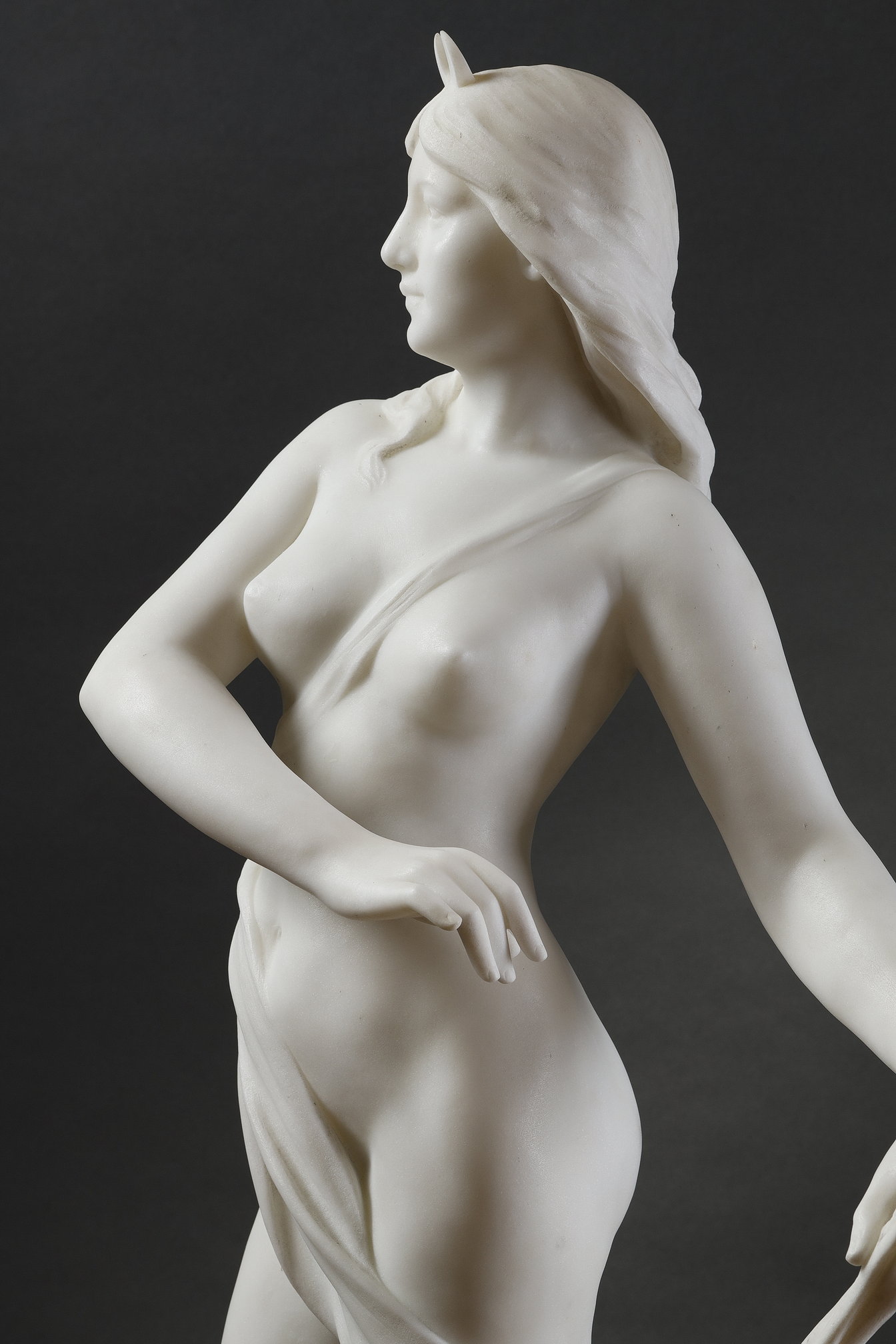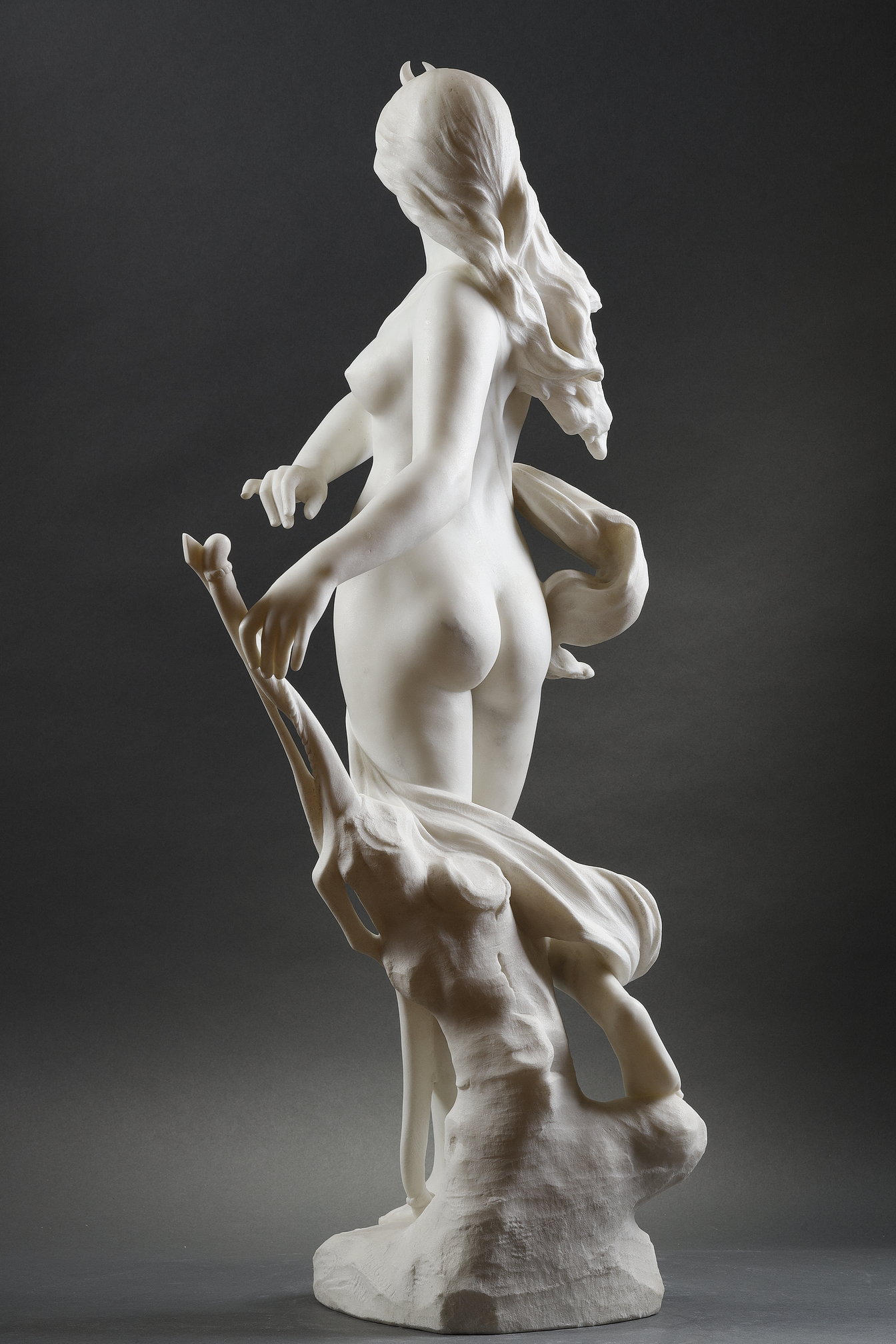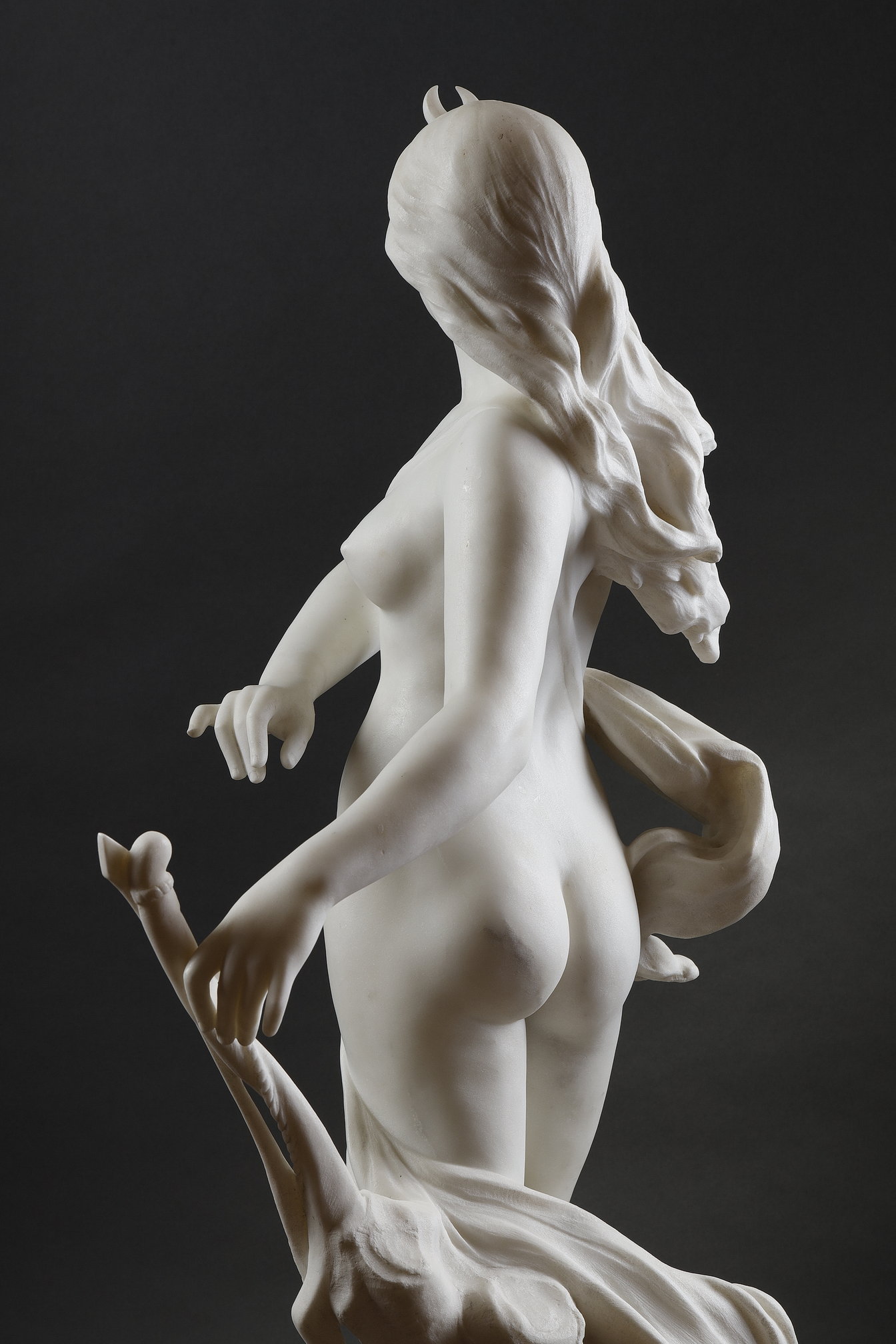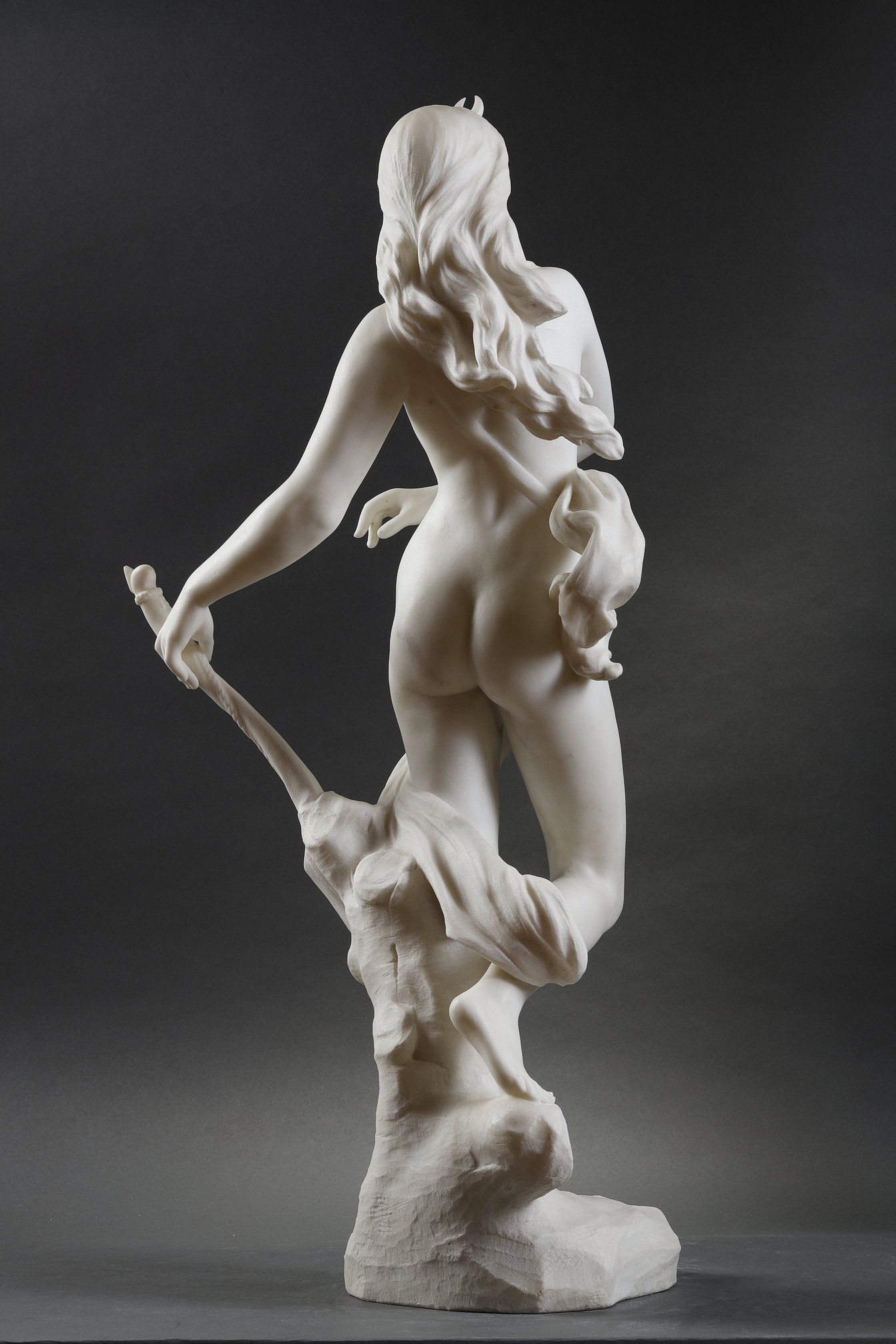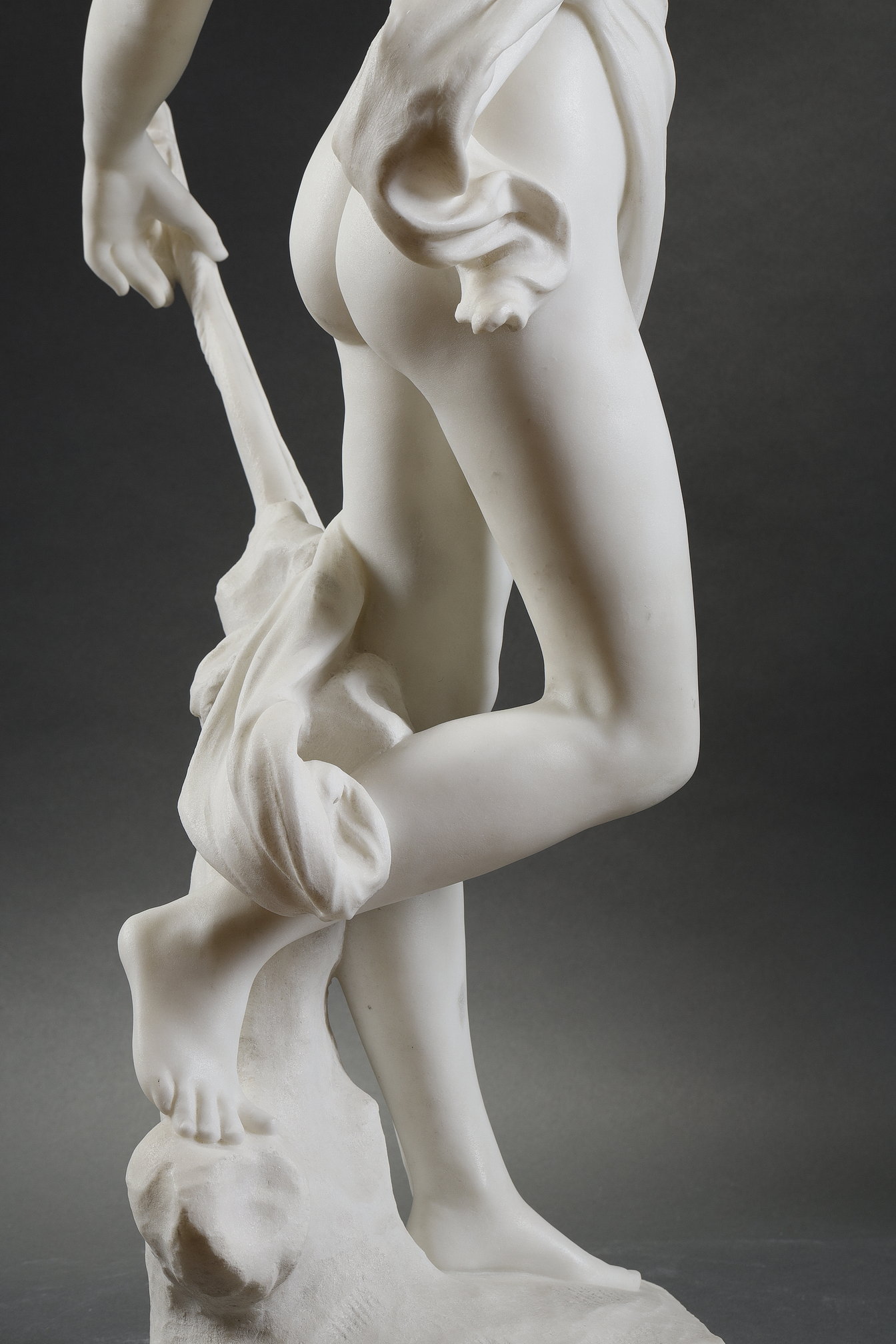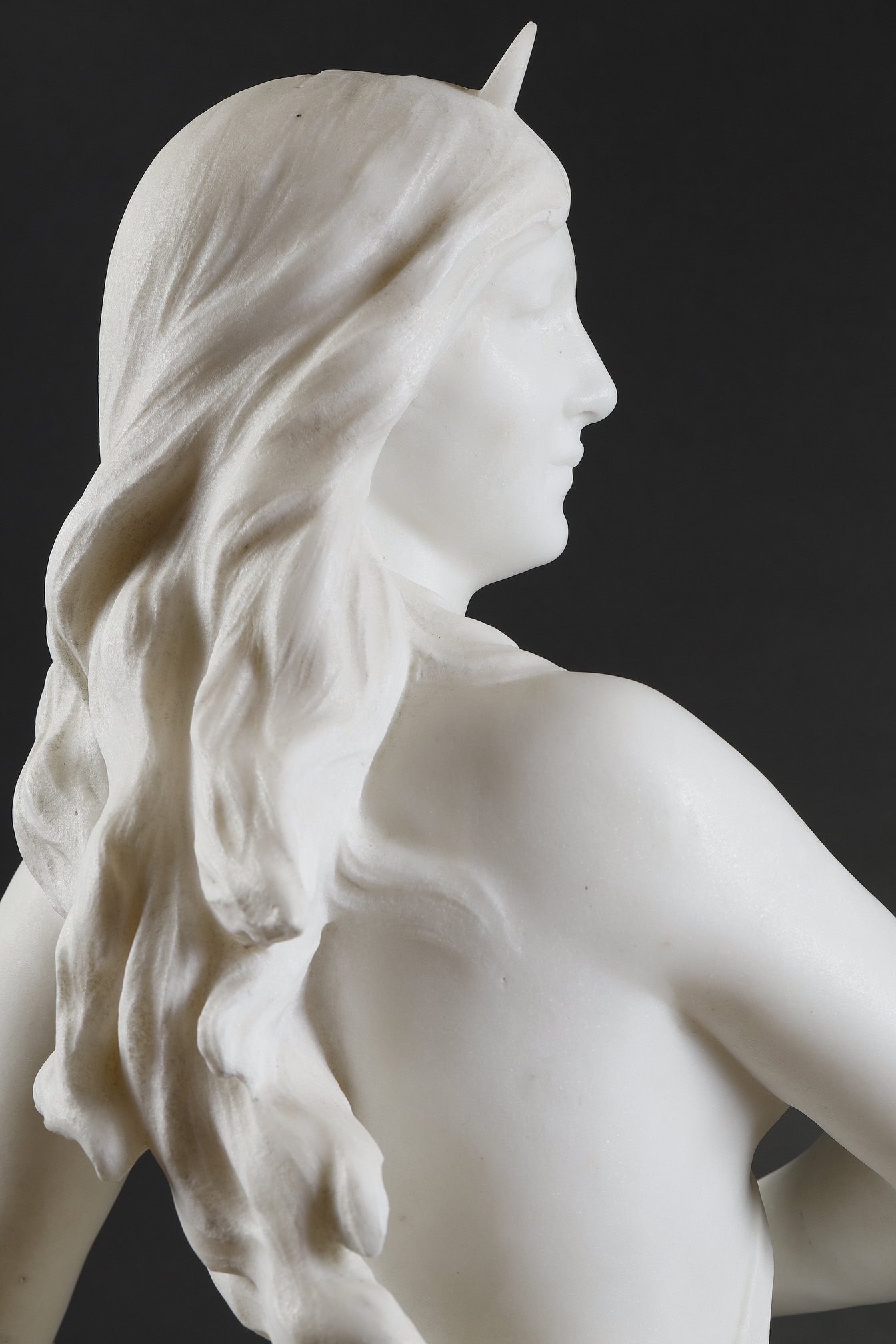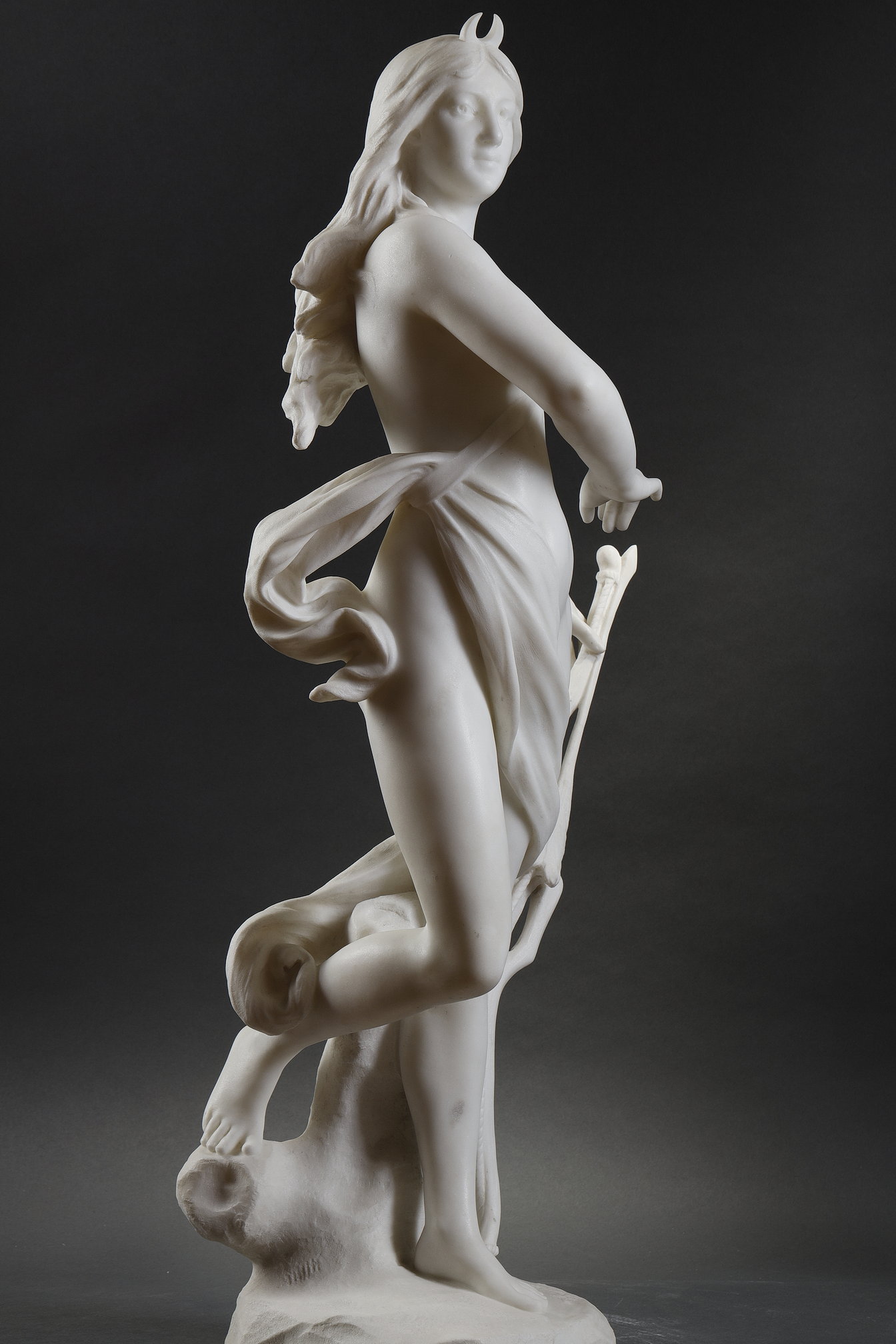DIANA
HENRI GODET (1863-1937)
French
Date : late 19th century
Dimensions : 88 cm (Height)
Material : White Carrara marble
Signature : “HENRI GODET”
Provenance : French private collection
Historical and artistic context
This representation of Diana belongs to the tradition of idealized mythological figures, while bearing the distinctive stylistic imprint of Henri Godet. A student of Mathurin Moreau and a regular exhibitor at the Paris Salons, Godet was best known for his busts and bronze sculptures; this work, carved in white Carrara marble, is thus a rare and remarkable example of his engagement with the most noble material in sculpture.
The goddess stands in an elegantly contrapposto pose, animated by a subtle twist of the torso and a firm, confident tilt of the head. The delicately arranged drapery accentuates the contours of the body while preserving the modesty of the subject. Technically virtuosic, the treatment of the veil gives the marble the illusion of flowing fabric, contrasting with the softness of the polished flesh and the solidity of the rocky base.
The choice of Diana as a subject evokes an ambivalent feminine archetype: huntress and virgin, guardian of the forests and mistress of the moon. Unlike the martial or dramatic portrayals often seen in 19th-century sculpture, Godet offers here a serene and sovereign vision of the goddess. Her face, imbued with calm, her distant gaze, and her dignified posture convey a silent majesty rooted in classical restraint. This is neither a triumphant nor a melancholic Diana, but rather a figure of inner strength—serene, remote, and composed.
It is precisely this renewed interpretation of the theme that lends the work its uniqueness. Godet subtly blends academic heritage with a decorative sensitivity all his own. The marble, executed with flawless precision, highlights the sculptor’s mastery both in anatomical modelling and in the interplay of textures.
Finally, the rarity of such marble works within the artist’s known oeuvre confers upon this piece a status of exception. Through its formal balance, sculptural purity, and the nobility of its inspiration, this Diana stands as one of the most accomplished works within the symbolic and mythological repertoire of French fin-de-siècle sculpture.

